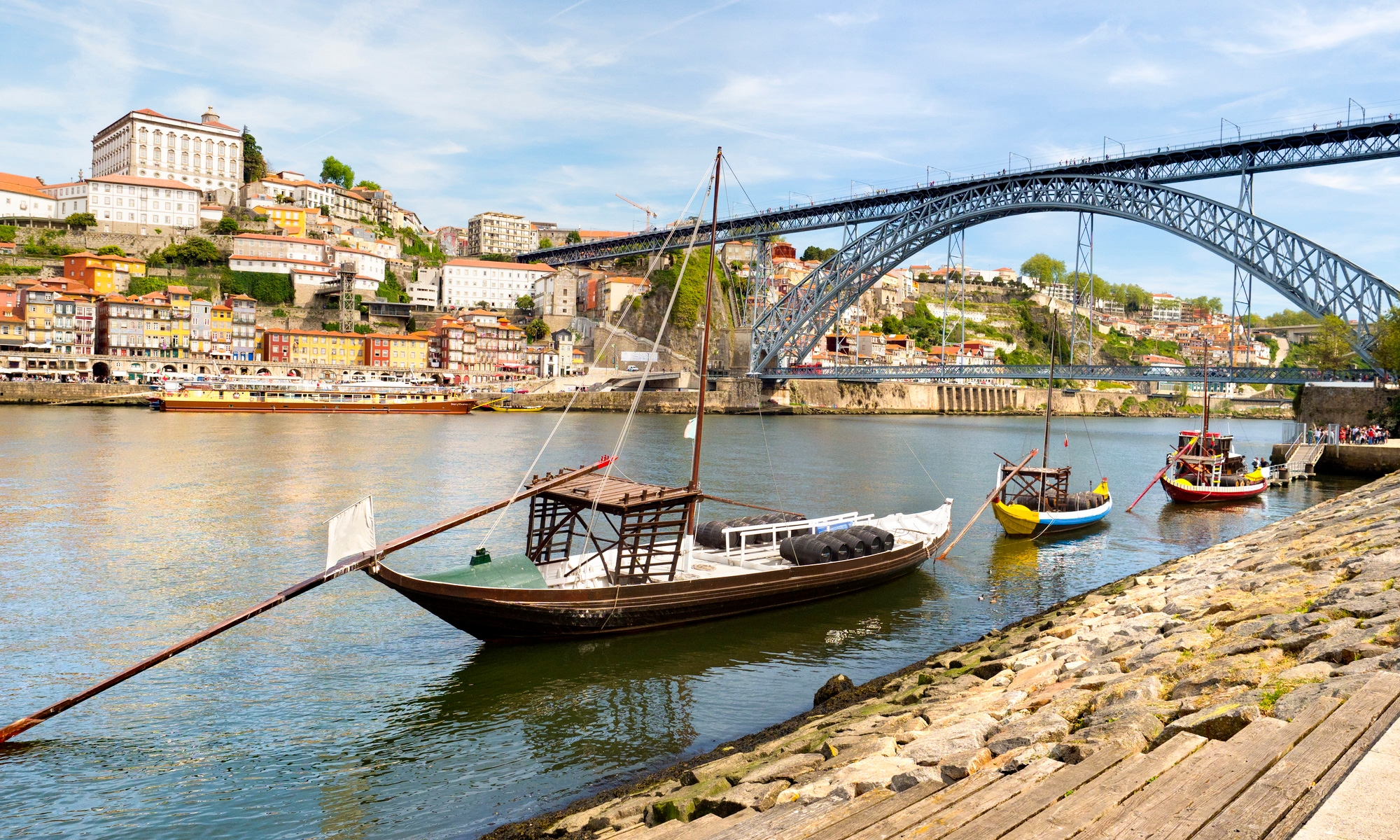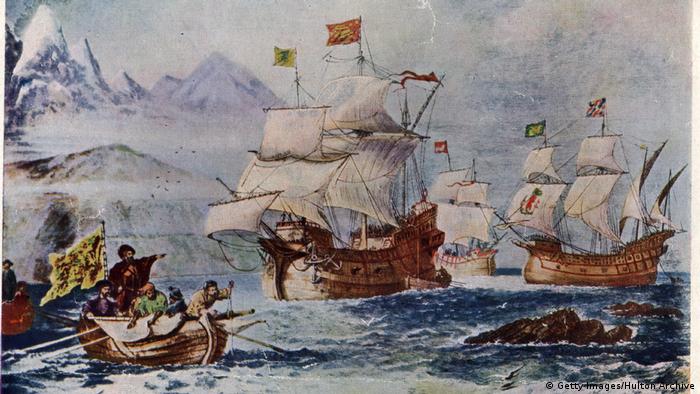
 2024-12-31 15:00:00
2024-12-31 15:00:00
Ferdinand Magellan was a Portuguese navigator and explorer who sailed under the flags of Portugal (1505–13) and Spain (1519–21). Magellan was the first European to sail across the Pacific Ocean and the first man to lead an expedition that circumnavigated the globe, though he did not survive the journey.
In 1505 Magellan was part of a Portuguese expedition to India and was believed to have spent around seven years in Goa, Cochin and Quilon. Later, Magellan sailed on to Malacca in present-day Malaysia where he distinguished himself in a skirmish with the natives, thus earning a promotion. Returning to Lisbon in 1512, Magellan was again involved in a Portuguese military action in North Africa and wounded. During this campaign, Magellan was accused of illegal trade with the Moors and fell out of official favor. From Spain he sailed around South America, discovering the Strait of Magellan, and across the Pacific. Though he was killed in the Philippines, one of his ships continued westward to Spain, accomplishing the first circumnavigation of Earth. The voyage was successfully terminated by the Basque navigator Juan Sebastián del Cano.
In 1517 Magellan presented his ideas of sailing west to reach Asia to the Spanish king, Charles V. After his project was accepted and finance secured from the Spanish crown, the usual financial problems and political intrigue delayed the sailing.
Ferdinand Magellan’s 1519 expedition changed the world forever. His journey was “the greatest sea voyage was ever undertaken, and the most significant,” says historian Laurence Bergreen, author of Over the Edge of the World: Magellan’s Terrifying Circumnavigation of the Globe. “That’s not hyperbole.”
In September 1519 Magellan’s fleet with 234 men including several Portuguese, Italians and French sailed from Sanlúcar de Barrameda, Spain, and crossed the Atlantic Ocean, which was then known simply as the Ocean Sea. Three years later, after Magellan’s death, only one ship, the Victoria, made it back to Spain after circumnavigating the world. That ship that remained, was captained by Juan Sebastian Elcano, a Basque who returned to Spain in September 1522. Along the way, they encountered a new ocean, mapped new routes for European trade, and set the stage for modern globalism. Sixty thousand miles later, and after the death of 80 per cent of those involved, the expedition had proven that the globe could be circumnavigated and opened the door to European colonization of the New World in the name of commerce.
Even though it was considered one of the greatest in history, Magellan’s voyage didn’t have that many repercussions after it finished. The main one was that it started a dispute between Portugal and Spain over who should control the Moluccas. The Spanish tried many times to establish a presence in the islands, but they all ended badly. Finally, after having spent much time and lost lives, they would concede them to the Portuguese.
In 1519, Ferdinand Magellan set sail from Spain with five ships to find a western route to the Moluccas. Magellan was sponsored by Spain to travel west across the Atlantic in search of the East Indies. His goal was to get to the very profitable Spice Islands of the Moluccas and, overall, the same as that of Columbus years prior: to go West to reach East. In doing so, his expedition became the first from Europe to cross the Pacific Ocean and circumnavigate the world.
Magellan's Expedition was made up of five ships: Vitória, Santiago, Concepción, San António, and Trinidad, this last one under Magellan himself. They all had a crew, supplies enough for 2 years, and guns.
They set sail from the Port of Sanlúcar de Barrameda, in Andalucia, on the 20 of September 1519. They stopped briefly in the Canary Islands and then continued their journey.
On the 29 of November, they got to Brazil and in December they entered the bay of Rio de Janeiro, to get supplies and repair the ships. They then kept on sailing through the coast, trying to find a passage to the other side of the continent.
At the beginning of 1520, they reached a river that they called “Rio de la Plata” (River of Silver, known in English as River Plate), the river next to which the cities of Buenos Aires and Montevideo would be built.
At the end of March, they decided to spend the winter in a new region further south. There, they met people with very tall people and big feet, which they named “Patagones”, therefore calling the region “Patagonia”. During this “hibernation”, part of the crew started a mutiny which was put under control by Magellan.
At the end of May, the Santiago ship was shipwrecked, with no man being killed, and in August they restarted their voyage.
On the 21st of October, they found the “Cape of Eleven Thousand Virgins”, the entrance to the now-named “Strait of Magellan”. Finally, they reached a passage that would lead them to another ocean.
The men found the place scary, with high rocks, huge cliffs, and fires all around made by the native people in their settlements. Therefore, they named the region “Tierra del Fuego” (Land of Fire).
They started the crossing of the Strait on the 1st of November, naming it “Strait of All Saints”, taking 27 days in total to cross. During this passage, the San António ship would desert the fleet, returning to Spain.
When they got to the “other side”, the sight was completely different from that of the Land of Fire, with calm waters and peace. Magellan named this new ocean the Mar Pacifico, the Pacific Ocean, for its apparent peacefulness, a stark contrast to the dangerous waters of the strait from which he had just emerged. Extremely rough waters are not uncommon in the Pacific Ocean, where tsunamis, typhoons and hurricanes have done serious damage to the Pacific Islands and Pacific Rim nations throughout history. The men thought it would be a small journey now to their destination, probably three or four days. To their surprise, they took three months and 20 days. Magellan and his men suffered terrible hunger on the voyage. They ran out of fresh food and many died of scurvy.
The days dragged on as Magellan’s crew anxiously waited to utter the magic words “Land, ho!” At last, the fleet reached the Pacific island of Guam in March 1521, where they finally replenished their food stores.
They finally anchored on the island of Homonhon (then uninhabited) and befriended the inhabitants of the neighbouring island of Suluan, trading goods and supplies and learning about the islands and their customs.
Later, the explorers continued their trip and got to the island of Limasawa, where they met the leaders of Butuan and Surigao, who were on a hunting trip to the island. They received Magellan as a guest in their lands explained their customs and told him about their lands. The richness of the islands could be seen in the gold jewellery that the locals used.
On the 31st of March, the crew held their first Mass in the Philippines, and soon after, they left. They went to Cebu, the largest trading post in the region, where they got on the 7th of April. There they continued to try to trade with the locals and also convert them to Christianity.
However, many natives were refusing this Christian conversion, like on the island of Mactan. On 27 April 1521, when the explorers were disembarking on that island with an army, Ferdinand Magellan was hit by an arrow at the beach and later killed by the indigenous army.
After Magellan’s death, his crew continued in the single ship that remained, captained by Juan Sebastian Elcano, a Basque.
In the end, only Victoria completed the voyage around the world and arrived back in Seville, Spain, in September 1522 with a heavy cargo of spices but with only 18 men from the original crew, including Italian scholar and explorer Antonio Pigafetta. The journal Pigafaetta kept on the voyage is a key record of what the crew encountered on their journey home.
Today, his legacy is remembered by both the Iberian countries and the rest of the world, with many places and even animals having been named after the navigator, such as the Strait of Magellan, a very important navigational route, a region in Chile, an archipelago in Micronesia, and even a US Navy project to circumnavigate the globe by submarine. The Magellanic Penguin was also named after him since he was the first European to have seen them.
Magellan’s name was also used in astronomy due to his amazing navigational skills, such as the two closest nebulae, the Magellan lunar and Marcian craters, and a NASA spacecraft. A legend was born—and in 1989, one of Magellan’s namesakes even travelled to Venus. During a five-year-long journey, NASA’s Magellan spacecraft made images of the planet before burning up in its atmosphere. Furthermore, the former US Presidential Carriage also bared his name.
Ferdinand Magellan's epic voyage to circumnavigate the globe for the first time continues to inspire explorers today. In his spirit, Magelline.com was created as a travel platform to help travelers chart their own course and discover the world.